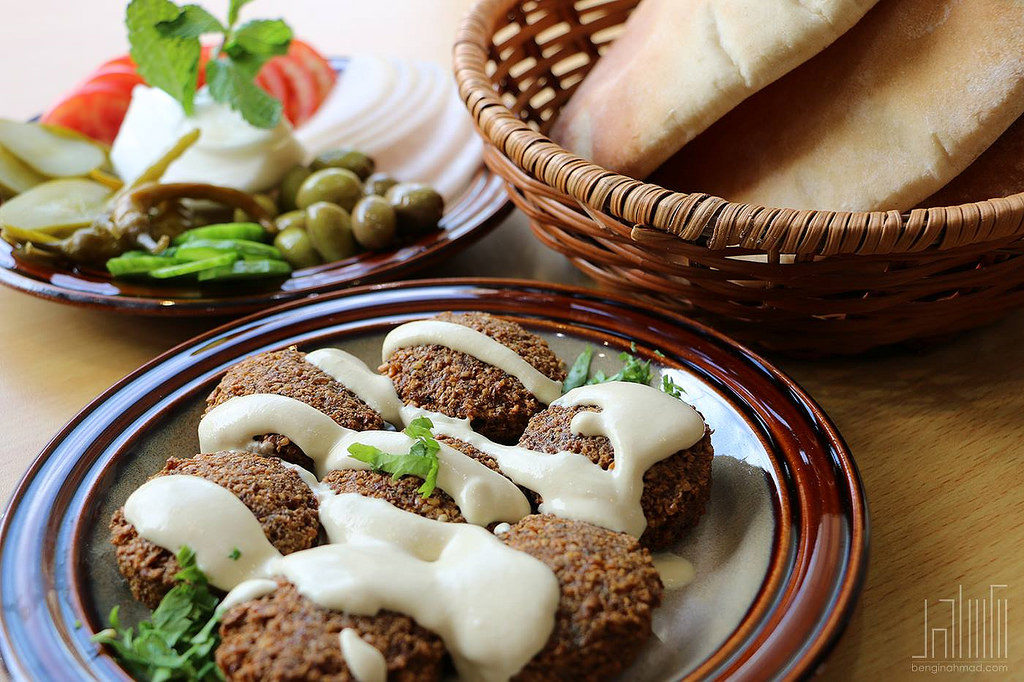Last week, we looked at some of the official symbols that have become synonymous with the modern State of Israel – like the menorah and Hatikvah. But just because something has not received official recognition doesn’t mean that it hasn’t found a special place in the hearts of Israelis and in the national psyche.
Today, a look at some “unofficial” national symbols of Israel.
Now here is one where you could stir up a real controversy! Wikipedia suggests not one but four national dishes of Israel.
One is no surprise: falafel. It’s hard to walk a city block in Israel without seeing someone cramming his pita with falafel balls and as much cabbage, pickles, peppers and hot sauce as the pita can withstand.

Still hungry? Then there are a couple of other foods that may not be top of mind but certainly make sense. There’s shakshuka, a boiling pan of eggs poached in tomato sauce with chili peppers and onions. Or how about Meorav Yerushalmi (Jerusalem mix), with liver and chicken hearts seasoned with garlic, onion, turmeric, cumin and coriander.
WATCH: TORONTO CHEFS OFFER THEIR TAKES ON JEWISH CLASSICS
But I think the most controversial food item is hummus. Not because the chickpea spread blended with tahini, olive oil, lemon juice and garlic isn’t a natural contender for the national food of Israel, but because of the culinary controversy that hummus has left in its wake. As an important exporter of this foodstuff, Israel has raised the ire of Lebanese businesspeople and chefs. They regularly accuse the Jewish state of gastronomic appropriation of a food to which they claim Israel has no legitimate ties.
While trying to digest a national food or two, sit back with a glass of arak. Long considered relegated to previous generations of Israelis, the anise-based drink has several things going for it. It has high alcoholic content – 40 to 80 per cent. It’s cheap – as low as 8 NIS (New Israeli Shekels) per glass (about $2.75 Cdn). But according to author Dudu Bussy, it also represents an ethnic resurgence. “It used to be that as a repressed minority, Sephardim would ‘Ashkenize’ themselves to feel like they belonged, but now the Ashkenazi brothers are ‘Sephardizing’ themselves to feel like they belong to this sunstroke of a country of ours,” he writes.
After you’ve had your fill of falafel and hummus, and washed it down with a glass of arak or two, it’s time to walk off your meal – and walk the national dog, too. Recognized by the Israel Kennel Club in 1963 and by the Fédération Cynologique Internationale (World Canine Organization) in 1966, this breed is described by the American Kennel Club as “alert, vigilant, territorial; docile with family, aloof with strangers.”

The Canaan dog is believed to date back to ancient Canaan, but more recently, canine pioneer Dr. Rudolphina Menzel (1891–1973) scoured the Negev desert for these “pariah dogs” and trained them as guard dogs and as service dogs for the Haganah. But according to a profile in the Washington Post, the future of the Canaan dog is not secure. With fewer than 3,000 across the world, their gene pool is weak and they are prone to degenerative diseases. “Unless some true effort is made, they will just fade into history, and that would be a shame,” says Janice Koler-Matznick, an Oregon-based biologist and expert on primitive dog breeds.
National personification: “Srulik”
Who? You may not be familiar with his name, but you most probably have seen Srulik, the sandal-clad lad in khaki shorts and the “kova tembel” hat. Created in 1956 by Israeli cartoonist Kariel “Dosh” Gardosh, Srulik was featured for many years in the Ma’ariv newspaper.

Beyond that, the character took on a national importance as the symbolic opposite of the stereotype of anti-Semitic caricatures. Shalom Rosenfeld, former editor of Ma’ariv, wrote: “Srulik became not only a mark of recognition of Dosh’s amazing daily cartoons, but an entity standing on its own, as a symbol of the Land of Israel – beautiful, lively, innocent… and having a little chutzpah, and naturally also of the new Jew.”
Contact Mark Mietkiewicz via email here.
